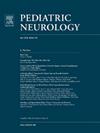青少年运动脑震荡的恢复与夏季的比较
IF 3.2
3区 医学
Q2 CLINICAL NEUROLOGY
引用次数: 0
摘要
背景:青少年急性脑震荡的症状在返校时可能会加重。我们试图在学年和暑假期间比较时间对脑震荡解决的影响。方法回顾性分析13-18岁的青少年在脑震荡后14天内到运动医学门诊就诊。主要结果是几天后脑震荡的解决。根据与当地学校日历相关的脑震荡时间,参与者被分为“学校”和“暑期”两组。结果共纳入2500例患者(女性42%),其中学校脑震荡2371例,夏季脑震荡129例。到第一次就诊时(中位数:5-6天),学校组的中位数症状评分是暑期组的两倍(16比8)。0.001),学校组(15天,95%可信区间[CI]: 15-16)和暑期组(12天,95%可信区间[CI]: 11-14)。早期脑震荡消退与夏季损伤相关(风险比:1.51,95% CI: 1.25-1.82, P <;0.001,当控制其他变量时)。较长的脑震荡消退时间与女性、受伤当天的症状更严重、两次或两次以上的脑震荡以及健忘症有关。躯体、认知和睡眠症状在学校组更高(所有P <;0.05),而情绪症状组间无差异。青少年在学年期间需要更长的时间才能从脑震荡中恢复过来。学术住宿可能不足以使恢复时间正常化。应提供早期管理,以及针对躯体、认知和睡眠症状的治疗。本文章由计算机程序翻译,如有差异,请以英文原文为准。
Recovery From Adolescent Sports Concussion During the School Year Compared With Summer
Background
Adolescents with acute concussion may experience increased symptoms when returning to school. We sought to compare time to concussion resolution during the academic school year and summer break.
Methods
This retrospective chart review assessed adolescents aged 13-18 years presenting within 14 days of concussion to an outpatient sports medicine clinic. The primary outcome was days to concussion resolution. Participants were categorized into “school” or “summer” groups based on the timing of their concussion in relation to local school calendars.
Results
A total of 2500 patients (42% female) were included: 2371 with school concussion and 129 with summer concussion. By the first clinic visit (median: 5-6 days), median symptom score in the school group was twice that of the summer group (16 vs 8). Median days to resolution differed (P < 0.001) between the school group (15 days, 95% confidence interval [CI]: 15-16) and the summer group (12 days, 95% CI: 11-14). Earlier concussion resolution was associated with injury during the summer (hazard ratio: 1.51, 95% CI: 1.25-1.82, P < 0.001, when controlling for other variables). Longer concussion resolution was associated with female sex, greater symptoms on the day of injury, two or more previous concussions, and amnesia. Somatic, cognitive, and sleep symptoms were higher in the school group (all P < 0.05), whereas emotional symptoms did not differ between groups.
Conclusions
Adolescents take longer to recover from concussion during the school year. Academic accommodations may not be sufficient to normalize recovery time. Earlier management, as well as treatments targeting somatic, cognitive, and sleep symptoms, should be offered.
求助全文
通过发布文献求助,成功后即可免费获取论文全文。
去求助
来源期刊

Pediatric neurology
医学-临床神经学
CiteScore
4.80
自引率
2.60%
发文量
176
审稿时长
78 days
期刊介绍:
Pediatric Neurology publishes timely peer-reviewed clinical and research articles covering all aspects of the developing nervous system.
Pediatric Neurology features up-to-the-minute publication of the latest advances in the diagnosis, management, and treatment of pediatric neurologic disorders. The journal''s editor, E. Steve Roach, in conjunction with the team of Associate Editors, heads an internationally recognized editorial board, ensuring the most authoritative and extensive coverage of the field. Among the topics covered are: epilepsy, mitochondrial diseases, congenital malformations, chromosomopathies, peripheral neuropathies, perinatal and childhood stroke, cerebral palsy, as well as other diseases affecting the developing nervous system.
 求助内容:
求助内容: 应助结果提醒方式:
应助结果提醒方式:


